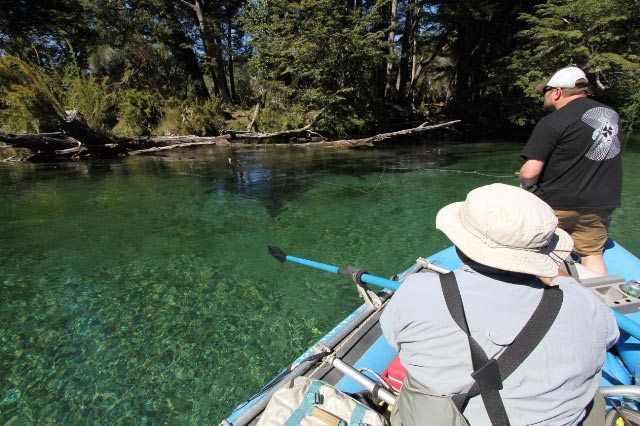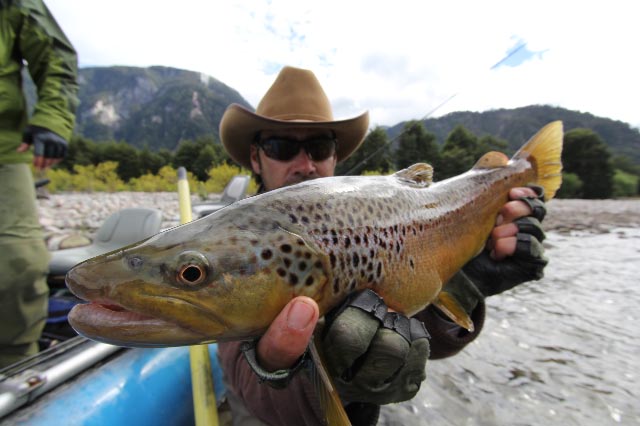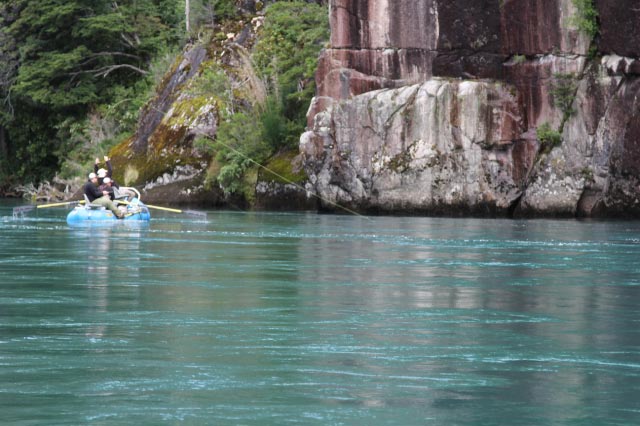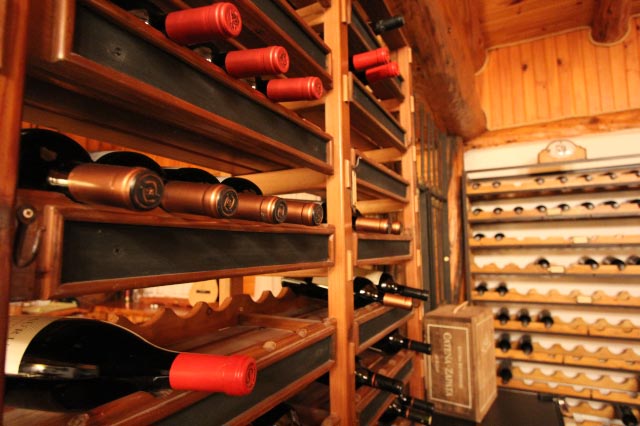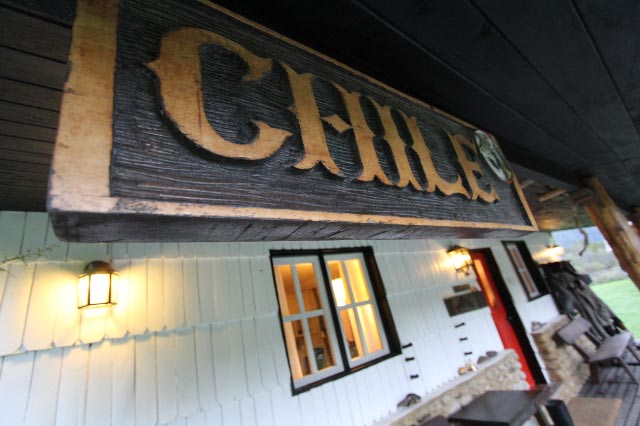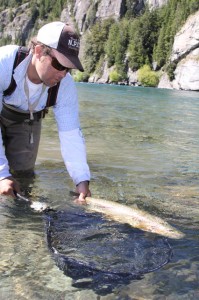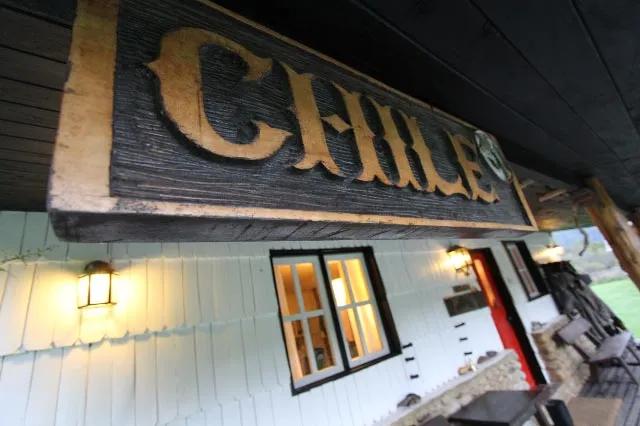
Patagonia is one of the great wild trout destinations in the world. This mountainous region of the Southern Andes is vast and varied. The variety of fly fishing opportunities is incredible, even compared with the great diversity that we have here in Montana. Although Patagonia receives less pressure than the Northern Rockies, it still attracts enough international anglers to put some pressure on some of the more famous fisheries. One of the least pressured regions of Patagonia is the central area near Esquel, Argentina and Futaleufu, Chile. I have been fortunate to have travelled to some of the world’s great trout fisheries including Alaska, Kamchatka, Scotland, Ireland and of course the Rockies here in the US. Each destination offers an incredible experience but few can offer as much variety as Central Patagonia.
Where is Patagonia? Patagonia simply refers to the southern Andes and includes both Chile and Western Argentina. Most of the classic trout fishing that you read about occurs in Northern and Central Patagonia. The far southern reaches of Patagonia are better known for sea run fisheries of huge brown trout like in Tierra del Fuego or the Rio Gallegos in Santa Cruz district. In general the Chilean side of Patagonia is much wetter and is home to some very large volume rivers. Chile looks a lot like the Cascades or Olympics in coastal Washington. Most of Argentine Patagonia is in the rain shadow of the Southern Andes and is much dryer. The scenery in Argentine Patagonia looks a lot like Montana, Wyoming and Colorado. Some of the regions like Los Alerces National Park are densely forested and others offer near desert climate depending on how close to the mountains you are. In general Chile is less developed and more remote, but it also is harder to get from river to river since each valley is essentially in a rugged fjord.
Northern Patagonia on the Argentine side is the most famous for fly fishing. This region is roughly north of Bariloche and south of San Junin de los Andes and includes legendary waters like the Malleo, Traful, Limay and Chimehuin to name a few. When visiting Northern Patagonia you typically stay on one or two of the massive estancias and wade or float fish on the estancia or float one of the local rivers using public access at bridges. Central Patagonia fishing is centered around the Argentine town of Esquel. Esquel is about a 5 hour drive south of the larger tourist town of Bariloche. The good fishing extends to the north in Los Alerces National Park, to the east with the classic multi day float on the Rio Chubut or the spring creek fishing on Arroya Pescado, The massive Rio Grande and Futaleufu (on the Chilean side) and the remote Rio Pico region about three hours south of Esquel.
Getting to Central Patagonia If you are planning on fishing the Argentine side of Central Patagonia or the Futaleufu in Chile you should plan on flying to Esquel. Plan on spending one night in Buenos Aires upon arrival. Most flights to the capital city leave the states in the evening and arrive in Argentina in the morning. I sleep well on flights and feel pretty good upon arrival after getting 6 or 7 hours of sleeping on the plane. There is generally only one flight to Esquel each day and they only are offered 4 days a week. There are usually around 7 flights a day into Bariloche every day which is to the north but if you can design your trip around the flight schedule into Esquel it is much more convenient. Although it is sometimes possible to get to Esquel on the same day you arrive in BA I don’t recommend it. The domestic flights are at a different airport and the connections are pretty tight if you are trying to catch a cab across the city. Buenos Aires is an amazing city and is often referred to as the Paris of South America. Enjoying one or two nights in BA is always a very enjoyable part of travelling to Argentina.
If you are fishing Chile (with the exception of the Futaleufu river which is just across the border from Esquel) you generally fly into Santiago and then connect the same day to Puerto Mount. Usually the lodge that you are travelling to arranges a charter flight from that point. There aren’t really many independent guides in this area and fishing on your own isn’t realistic due to the terrain so the lodge you team up with should handle all of your logistics. Farther south in Coyhaique there are independent guides but the public waters in that area also receive more pressure. I have visited every country from Mexico to Columbia and both Chile and Argentina. In my travels in both Chile and Argentina I have always felt very safe. My level of “safety radar” is about the same as when travelling in Europe which is a nice perk compared to some of the Central American countries that I have travelled in where you have to be much more alert to safety concerns.
DIY, Hiring Independent Guides or Fishing With a Lodge Some of the best fishing in Patagonia is on private estancias or on larger rivers that are best float fished. I have had friends fly to Patagonia, rent a car and have a great trip fishing on their own but you are limited on what you can access. Fishing on your own is much more difficult in Chile due to the rugged nature of the landscape and the need for boats in many areas. Argentina would be the place to try some DIY fishing but do your homework and look for waters that can be accessed by bridges. If you base a trip out of Esquel you don’t necessarily need base out of a lodge. There are several good independent guides in the area. You can often rent a room from a hosteria (bed and breakfast) and email them for contact information on good guides (make sure to book these far in advance). Make sure the guide has a license to fish in Los Alerces National Park to increase your options. The nice thing about fishing out of the lodges in the area is that they often have agreements with private estancias that independent guides don’t have. Of course the added perks of nice accommodations and great food is also a bonus. On my trips south I am always hosting a group of anglers so we exclusively fish with a few of our lodge partners. One of the things I like about Central Patagonia is that we can easily link more than one of our lodge partners together on a trip. Often we fish both Chile and Argentina on the same trip while staying at two or more lodges which is a nice option. If you choose an all inclusive lodge option plan on spending around $4500-$6500 for a full week of guided fishing not including transfers. On the Chilean side it is sometimes more but they often include the transfers so it is about the same. We often like to go down for a bit more than a week since it is so far away and often plan for about 8 or 9 days of fishing which is about perfect. My favorite trip is to combine the Futaleaufu river out of the Futa Lodge in Chile with a sampling of rivers and lakes in Argentina with our friends at Carrileufu Valley Lodge. Another interesting option is to do part of the trip in Patagonia and then head to Northern Argentina to spend a few days fishing for golden dorado at Pira Lodge.
The Fishing The fishing is very diverse and includes a blend of huge rivers, spring creeks, medium sized floatable freestone rivers, lakes with monster trout and smaller wade fishing streams on private estancias. It is very similar to fishing across Southwest Montana and many of the same flies and techniques are used.
Tackle and Equipment I generally bring a 9’ 5,6 and 7 weight when fishing central Patagonia. A five weight is nice for fishing the spring creeks and smaller waters or as a dry fly rod on the bigger rivers when the wind isn’t blowing too hard. A six weight is a great all around rod and can punch wind or pull small streamers and a 7 weight is great for throwing sinking heads and big streamers. For lines I use floating lines on all three rods and then a 200 grain shooting head on the 7 weight for stripping streamers on the bigger rivers. Shorter 7.5 foot leaders are best for streamers and 9 foot leaders are good for dries. On the spring creeks sometimes the leaders are longer. I mostly fish 2x and 3x on most of the rivers and sometimes go down to 4x on the more technical spring creeks or gin clear rivers like the Rivadavia but these trout aren’t pressured much and are rarely leader shy so matching the leader to your fly size is most important. When throwing streamers 0X or 1X is best.
We fish almost exclusively dry flies or streamers on our trips in Central Patagonia. Nymphs can be productive on some of the fisheries but usually the dry fly fishing is so good there is no need or you are targeting big trout with streamers. The fly selection varies based on time of year and location but an assortment of terrestrials, caddis, attractor dries and streamers is usually all that is needed. On some rivers like the Futaleufu there are also midging trout so some smaller dries in the 18-20 size can be useful but make sure to bring a lot of big foam dry flies too like beetles and chernobyl ants.
Los Alerces National Park Los Alerces is in Argentina and provides both dramatic scenery and great fishing. The scenery is breathtaking and reminds me of Glacier National Park in Montana with lots of lakes. The rivers drain large lakes and as such they are incredibly clear so sight fishing is spectacular. The Rio Rivadavia is one of the world’s most beautiful fisheries and staring into aquarium clear waters teaming with big trout in the 18-22” class (some bigger but very few small trout) should be on every fly fisherman’s bucket list. Los Alerces is home to many fine lakes and rivers. Generally as each river drains a new lake it changes names but all of these fisheries are part of the same river system that eventually feeds the Rio Grande (later renamed the Futaleufu in Chile and then the Rio Yelcho after leaving Lago Yelcho). You could spend your entire trip fishing the lakes and rivers of Los Alerces but you should plan at least one day of fishing in Los Alerces and the Rivadavia should be high on the list. Carrileufu Valley Lodge is a great base for fishing Los Alceres. The early summer (December and January) probably produces the best fishing in this region.
Rio Grande/Futaleufu The Rio Grande is near Tevalin and Esquel and is a massive tailwater that drains Los Alerces. When it crosses into Chile it is renamed the Futaleufu. The Rio Grande is reminiscent of the Missouri on the Argentine side and is a great dry fly river. Pods of big rainbows (they all seem to be 19”) are often found midging in large eddies and some big browns can be picked up on streamers. There is some pressure from locals in Esquel on weekends so it is nice to hit this on a weekday. The Futaleufu quickly picks up gradient and is a huge whitewater river on the way to Lago Yelcho. The Futa sees very little pressure (on our last trip we fished it for 5 days and only saw two other fishing boats on one of the days) and has some of the hardest fighting rainbows on the planet. It offers high quality site fishing for big rainbows (average about 19”) and nice streamer fishing for browns in the 18-25” range. The scenery is breathtaking with hanging glaciers and lush forests. Lago Yelcho also has some amazing dry fly fishing that jump completely out of the water for adult dragon flies in December (try you tubing Lago Yelco dragon fly fishing!). I would highly recommend planning at least three days of fishing on the Futa side of the border (we usually stay at the Futa Lodge which is run by my friend Brian McKnight).
Rio Chubut Another great fishery in the area not to be missed is the Chubut. The Chubut is best fished on a three or four day wilderness float trip. Generally two gear boats go out in advance of the fishing boats each day to set up nice camps. When you roll into camp after a day on the water your tents are ready along with some nice Argentine wines and appetizers! The dry fly fishing on the Chubut is fast and furious with 100 fish days the norm rather than the exception. The fish average smaller than on the Rio Grande/Futaleufu but there are still trout over the 20” mark. These trout see very, very little pressure and act like it. Frequently more than one trout is rushing at your fly at the same time.
Spring Creeks Argentina has some of the world’s greatest spring creeks. They are similar to our famous spring creeks here in Montana but see a lot less pressure. Fishing large foam beetles and even streamers to 22” rainbows that you spot in advance is always a rush. Arroya Pescado is about an hour from Esquel. There are also some spring creeks on private estancias both near Esquel and in the Rio Pico region farther south. Most of these gems are leased by some of the lodges in the area.
Corcovado and the Rio Pico region The Rio Pico is about 3 hours south of Esquel in a very remote part of Argentine Patagonia. The Corcovado is about halfway between Esquel and Rio Pico. Often you can drive to Corcovado to float fish for the day and then continue afterwards to the Rico Pico area. The Corcovado is a fun medium sized river with some big browns and spunky rainbows (it is renamed the Palena in Chile where it is also a great fishery) as well as some huge brook trout in April. The Rio Pico area is full of small spring creeks, trophy lakes and of course the Rio Pico. Much of this region is on private estancias and is best fished with one of the local lodges or outfitters that has leased permission in the area. If you are on a longer 9 or 10 day trip I would highly recommend a few days in the Rio Pico area. In addition to some great small stream and medium sized river fishing there are some lakes with HUGE trout that frequently go over 10 pounds.
When to go Good fishing starts in October (the equivalent to May in the northern hemisphere). November really gets hopping and even though the waters can be higher they are generally clear because so many of them drain large lakes. January and February are probably the most popular time to visit because of the summer weather but March is still very pleasant (like September here). If travelling later in the summer a few of the fisheries like the Rivadavia that have seen a few boats get tougher so plan on spending more time on the remote waters like the Futaleufu or the Rio Pico area where the trout receive very little pressure. April also produces great fishing for fall run browns and brook trout (like fishing Montana in October).

